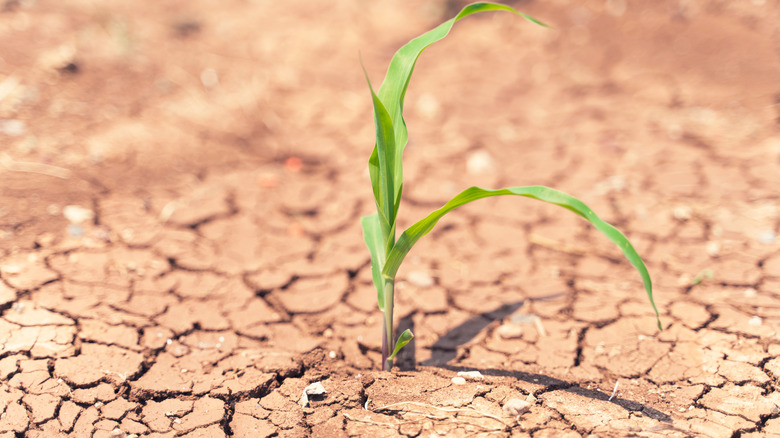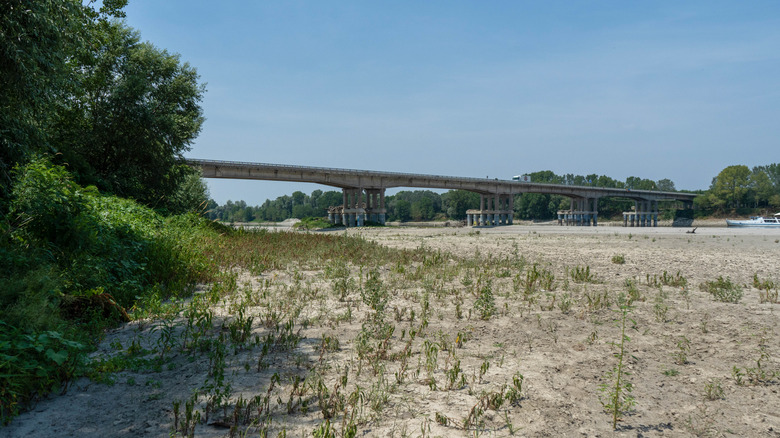Italy's Po Valley Is Facing A New Threat To Its Already Damaged Crops
Where would we be without Italian food? The world's favorite cuisine, according to a globe-spanning survey of more than 25,000 people, Italian fare was ranked the best of all regional foods by most Americans surveyed, too — 88% of them, to be exact (via YouGov). The average American puts away nearly 20 pounds of pasta per year, a sure sign of our love for the Mediterranean country's offerings — and Italy satisfies that need by exporting more than $500 million worth of the starchy staple to American shores each year (via the Observatory of Economic Complexity).
The Italian land that grows the durum wheat — used to make the pasta we all love so much — grows more ingredients that many of us deem delicious, from the grapes that are eventually crushed into wine to the olives that end up expressing olive oil (via the International Trade Administration). But this summer, Italy's agriculture is in serious trouble as the Po River Valley — a stretch of fertile land that spans about 405 miles from the Alps to the Adriatic Sea — faces the worst drought it's seen in 70 years. As the Associated Press reported earlier this month, a lack of winter snowfall and a shortage of early summer rain plus blazing heat has dried up the river, threatening the production of crops such as wheat, rice, tomatoes, and grapes. And now, insult is being added to injury as seawater from the Adriatic flows into the already-suffering region.
Incoming seawater is making it impossible to irrigate parched crops
As reported by Reuters, more bad news is arriving to Italy's drought-stricken Po River Valley: The encroaching seawater from the Adriatic is pushing its way into the valley as a result of the river's lack of current. The vital agricultural region that produces an estimated 40% of Italy's food has been plagued by severe drought since earlier this summer, a fact that threatens to devastate the country's food supply. The Associated Press aslo reports that the country's energy sources are also in jeopardy, as the region is home to a number of hydroelectric power plants that will no longer function if the river continues to dry up.
Reuters writes that irrigation canals — originally dug to channel river water to crops — are now filling with seawater, leading to the scalding and burning of already withered plants. Soy, corn, and rice are among the staple crops that are suffering immense damage, facing limited production this year which will mean a reduced harvest next year as well as a limited number of seeds available for planting the following season's crops. Unfortunately, farmers in the region have predicted that the current conditions will prolong the agricultural crisis for at least two years. "I am not saying it's a catastrophe, but we're nearly there," rice farmer Luigi Ferraris told Reuters.

